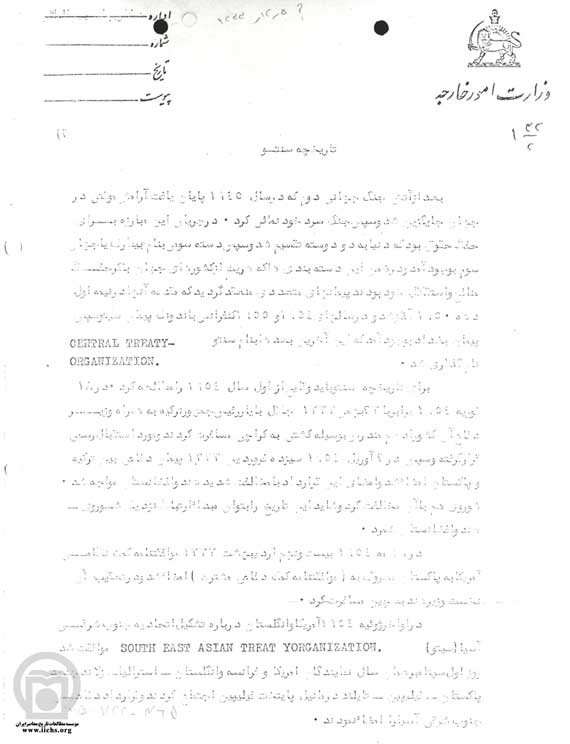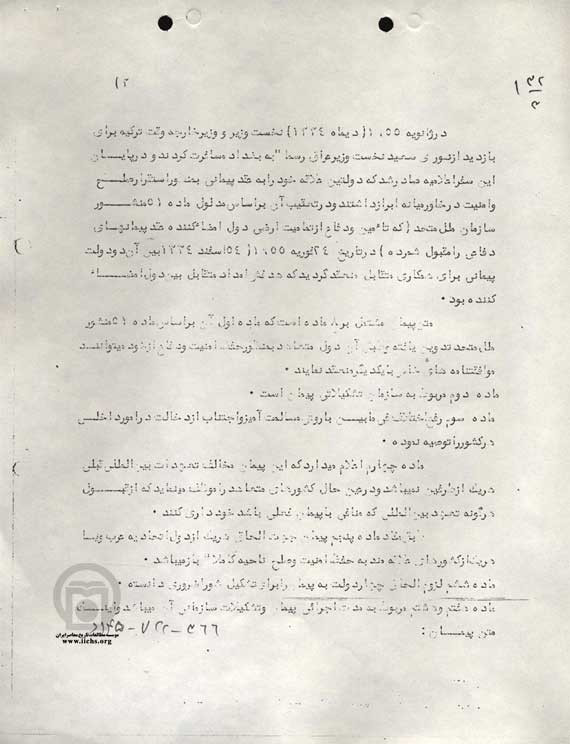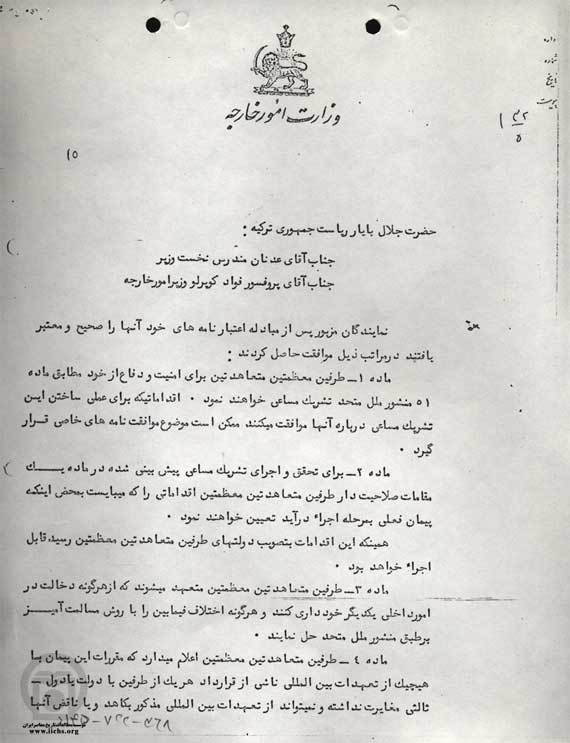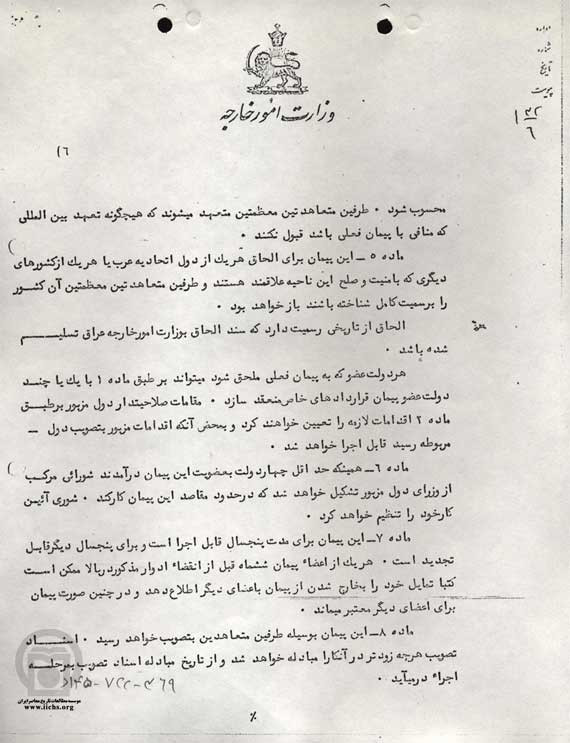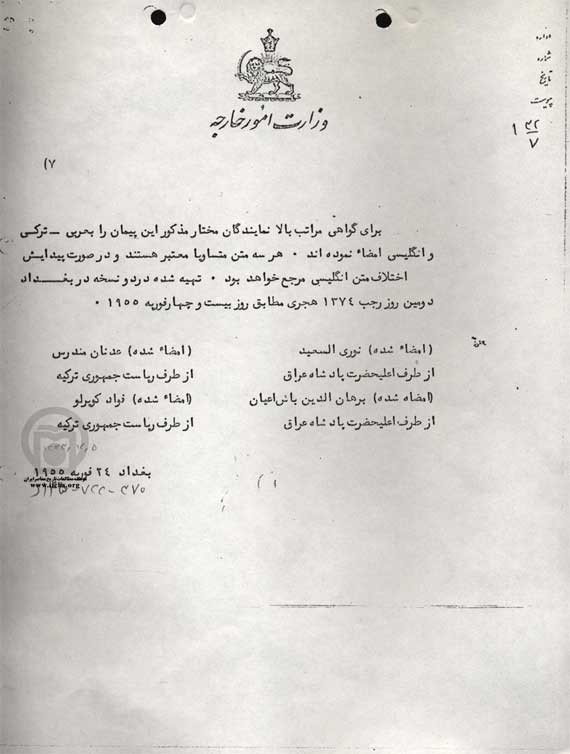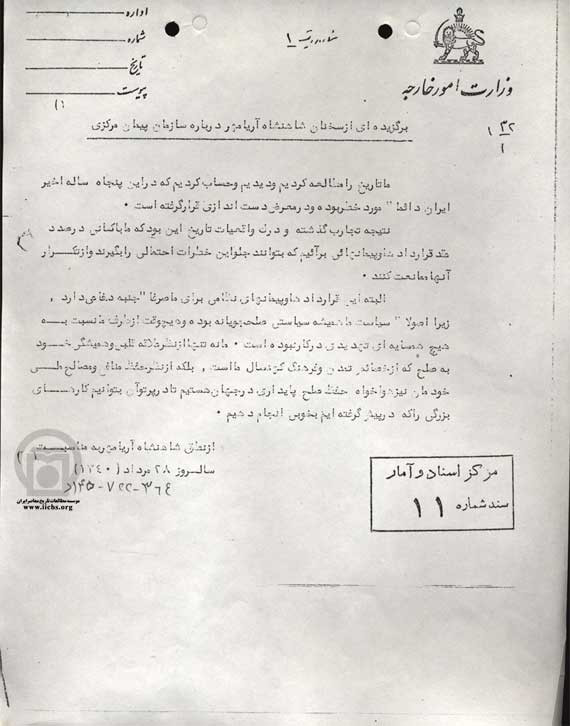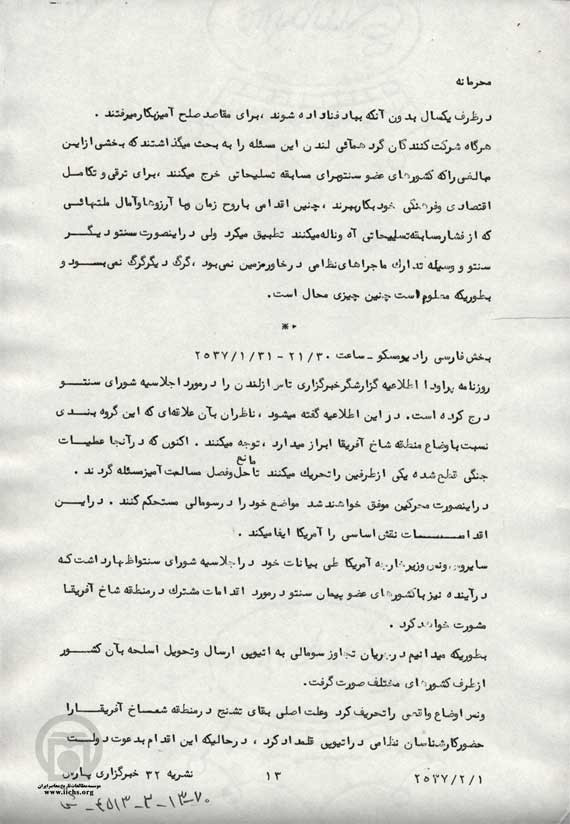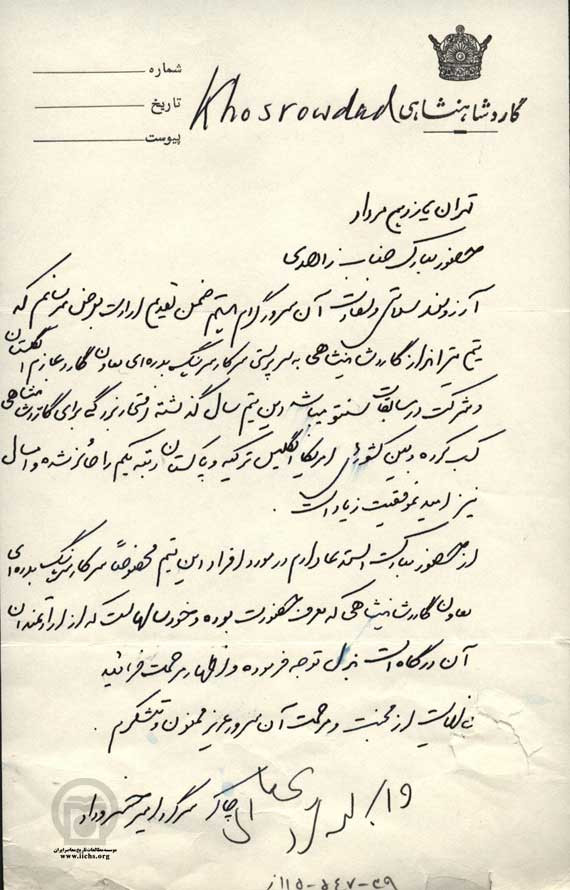The plan to make security belt from West Europe to South Eastern Asia with the excuse to prevent the influence of communism needed a link of chain called Baghdad Treaty which connected NATO in the west to CITO in East Asia. The treaty was concluded in 24th Feb. 1955 among Pakistan, Turkey, Iraq, and England. Iran joined the treaty in November 1955. Some time later Ayatollah Kashani issued an announcement and disclosed the aims of this treaty. In their opposition to this move of Iran, Fadaian Islam made an unsuccessful attempt on Hossein Ala's life in 17th Nov. 1955 which ended in the arrest and martyrdom of some of its members. Following Abdol_karim Qassem's coup in Iraq 1958 and Iraq's exit from the treaty, its name changed to CENTO. Considering the Russia's position, the United Stateswas not a member of it formally, but participated in the Treaty's main committees including anti- sabotage committee directly controlled by American experts. The said committee was active in suppression of public demonstrations. The joint anti-sabotage committee was formed by American agents in CENTO and representatives of the army, gendarmerie, police department and SAVAK to suppress public movements.
The United States' neutral position in Pakistan-India war of 1965, and separation of some parts of it as Bangladesh, made it clear that Iran cannot depend on any help from the United States, in case of any threats of invasion. When many economic unions were formed in the world and threats of the expansion of communism became weak, the CENTO heads formed RCD under the leadership of United States and replaced CENTO. By Iran's removal from the treaty in March 1979, it was liquidated.
The attached documents refer to the history of CENTO, the Moscow's opposition to this treaty, Iran's payment of its share to anti sabotage committee.
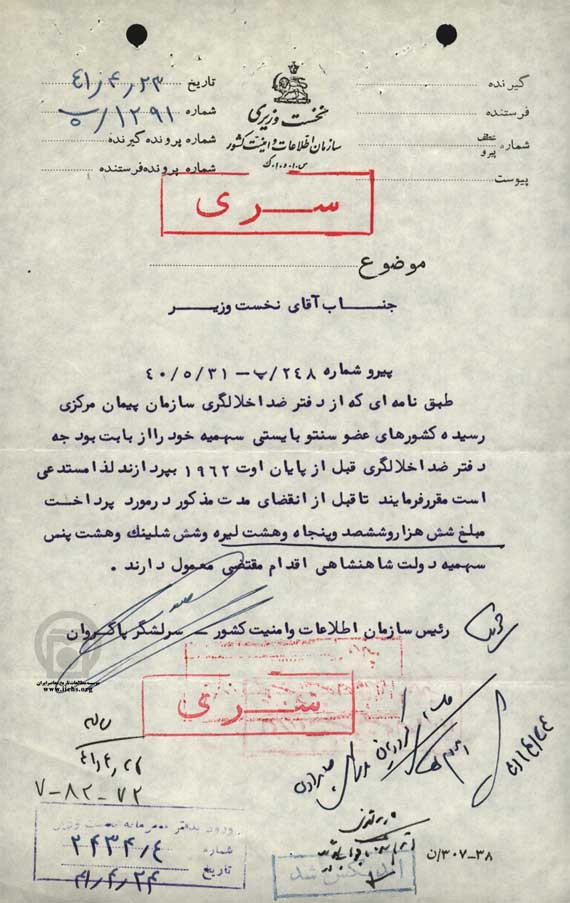
CENTO Treaty
A letter from head of SAVAK, major general Pakravan to the prime minister, Ali Amini for the payment of Iran's 6600 pound share to anti_sabotage committee of CENTO [7-82-72]
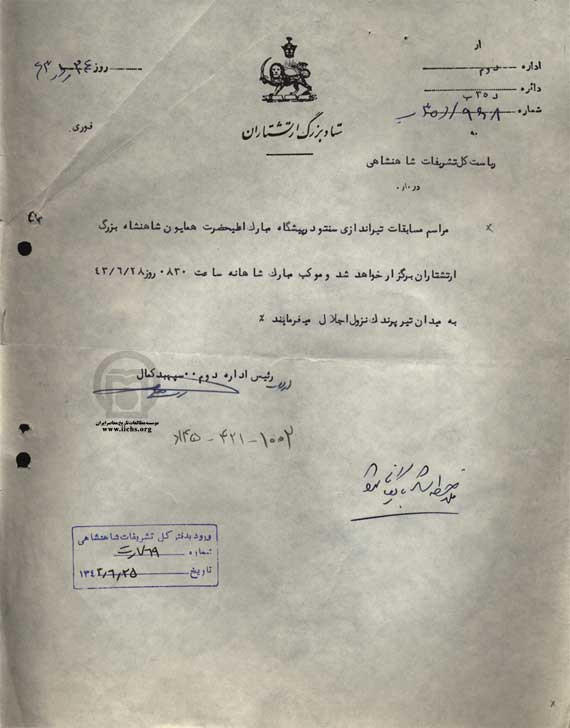
CENTO Treaty
A letter from the head of army staff second office, lieutenant general Kamal to the imperial general protocol for holding CENTO shooting matches in the Shah's presence [D145-421-1002]
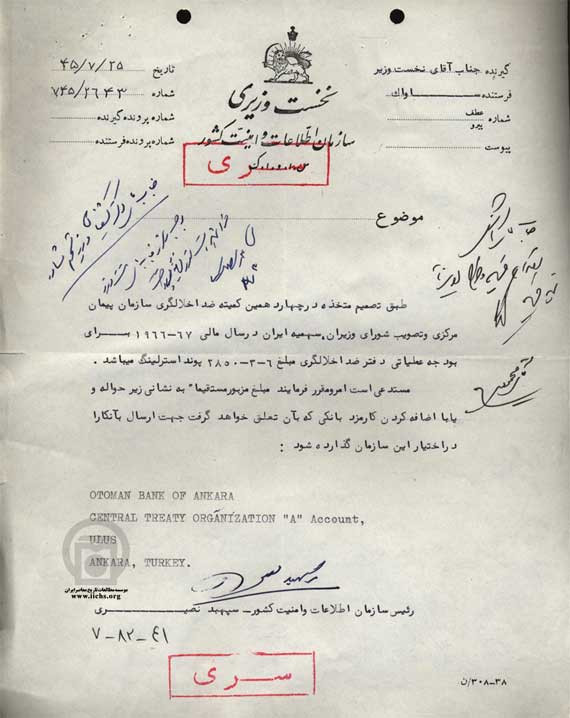
CENTO Treaty
Head of SAVAK, lieutenant Nassiri' letter to the prime minister Howeida for the payment of 1966-67, 3000 pound share of Iran for CENTO anti sabotage committee [7-82-41]
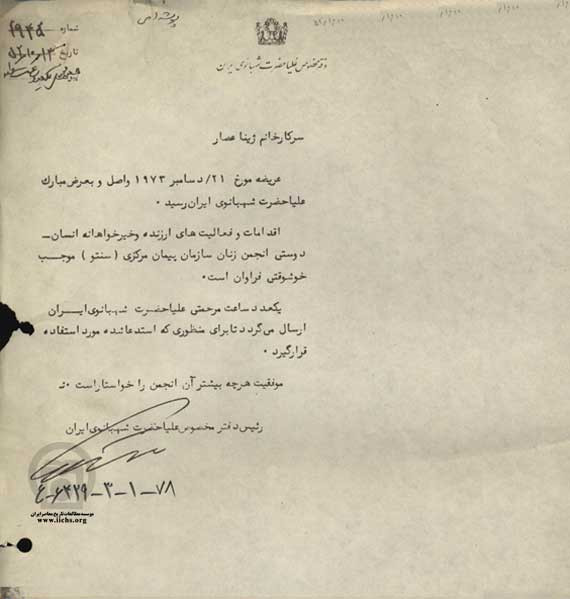
CENTO Treaty
A letter from Farah's special bureau to Zhina Assar indicating the dispatch of a gift watch from Farah to CENTO's women's society to spend on charity affairs [AA 6429-3-1-78]
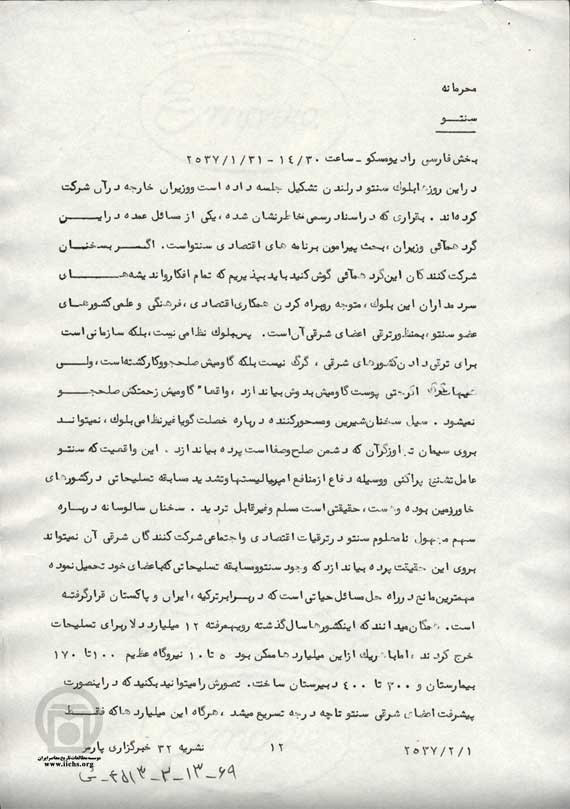
CENTO Treaty
The content of Persian section of Moscow radio on the conference of CENTO foreign ministers, and the organization's economic programs with regard to the spending of 12 milliard dollars by its members [SH4513-2-13-69] (page1)
iichs.ir/vdcb.fbfurhb00e4pr.html
